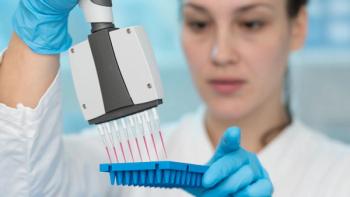
- BioPharm International-10-15-2004
- Volume 2004 Supplement
- Issue 4
Back to the Pharma Future
Recognize that the drug drought is the "disease" underlying many of pharma's troubling symptoms, and the cure becomes apparent.
Summer 1988: I am sitting at a large conference table in the Worldwide Business Development Department at E.R. Squibb & Sons Pharmaceuticals. In my first position in the industry, I have been charged with creating a 35-mm slide show to help promote Squibb to potential business development partners. This is a novel idea at the time: Most pharmaceutical companies do not perceive a need to market themselves in order to in-license desirable new products.
Stan Bernard
In fact, the industry at this time is flush with new products: 20 new molecular entities (NMEs) will be approved this year. Squibb is no exception. Although it's a relatively small pharma company, Squibb discovered the blockbuster drug Capoten, the first ACE inhibitor, in the venom of a snake. We now have several follow-on ACE inhibitors that we are seeking to out-license, perhaps in quid pro quo deals. Our researchers also recently discovered Azactam—representing an entirely new class of antibiotics—in the dirt of New Jersey.
To complement our internal drug development, we are evaluatingseveral in-licensing opportunities forwarded to us by academic researchers, small chemical discovery companies, foreign pharmaceutical companies, and even one of the new biotechnology companies, Centocor. The most interesting licensing opportunity, though, is from Sankyo, a Japanese company that is offering us worldwide rights outside Japan for Pravachol, a statin for lowering cholesterol. We are quite interested in this product because Merck, our major competitor, has already successfully launched the first statin, Mevacor, into our stronghold—the cardiovascular marketplace. Merck, with its stable of former NIH and academic researchers, almost always discovers its own compounds and very selectively enters into licensing partnerships.
Summer 2004: I am sitting at a conference table at a New Jersey hotel with executives from three biopharma companies (Genervon, Medarex, and Neurogen) and four pharma companies (Eisai, Merck, Novartis, and Pfizer), all eager to promote their companies to others, especially biopharma executives, who will read about our roundtable discussion in this special copublished supplement.
How times have changed.
Formerly flush, pharma is in the midst of a severe drug discovery drought. Despite spending more than four times as much on R&D than in 1988, the number of NMEs receiving marketing approval is nearly the same —and half derive from in-licensing. The current failure rate of compounds entering Phase III is almost twice the 1988 rate. Big pharma companies need to introduce three new products annually to maintain their historically high growth rates, but the current industry average is half that.
Big Pharma desperately needs new compounds, and biopharma represents its best potential source. But competition among pharma companies—and, increasingly, among their biopharma counterparts—is fierce. The typical licensing deal has at least five suitors vying for each compound. In 1988, most such deals had fewer than three.
Consequently, today's pharmaceutical companies aggressively market not only their functional capabilities—developing, marketing, and selling products—but also their partnering capabilities: creating, coordinating, and managing alliances.
While all major pharma companies have significantly improved these capabilities, each has taken a different approach to obtaining new compounds. Pfizer, for example, bought two mid-size pharma companies, Warner-Lambert and Pharmacia, primarily for the rights to two blockbusters—all-time bestseller Lipitor and Celebrex. Novartis built a new research facility near Boston to gain access to cutting-edge research and technologies. Eisai established administrative offices and sales forces in the United States to enhance its global reach in the competition for partners.
The best example may be Merck, which has lately undergone a business development makeover. Long regarded as the industry's best at internal discovery and development, Merck now aggressively pursues external licensing and alliance opportunities to feed its pipeline. "In 2001, we completely transformed our approach to external collaborations," said Merck CEO Ray Gilmartin. Over the past five years, Merck's partnership transactions have risen by nearly 80 percent.
Merck is also changing how it makes deals, showing surprising flexibility about sharing development and marketing control with partners. To gain access to late-stage compounds, Merck is actively engaging in copromotion. Three of its next four drug launches will probably be copromoted.
In contrast to 1988, today's pharma marketplace is rife with pricing pressures, generic erosion, and increasing public, political, and regulatory scru-tiny. But, just recognize that the drug drought is the "disease" producing these troubling symptoms, and the cure becomes apparent. An industry that has gradually become reliant on biopharma and other third parties to stock its pipeline must continue to be creative in its business development approaches. Pharma must formulate new business models as well as new products. Its future depends on it.
Stan Bernard, MD and MBA, is president of Bernard Associates LLC, a management consulting firm that provides strategic planning, business development, and marketing services to health- care and pharmaceutical industry clients. He is also a senior fellow at The Wharton School of Business, where he has been teaching Pharmaceutical Management since 1991. Dr. Bernard can be reached at (908) 234-2704 or at
Articles in this issue
about 21 years ago
Oiling the Engines of Inventionabout 21 years ago
Fruitful and Prosperousabout 21 years ago
Private Industry's Most Eligibleabout 21 years ago
The Human Side of Partnershipsabout 21 years ago
A Decade (and 1/2) of Dealsabout 21 years ago
Avoiding the Train WreckNewsletter
Stay at the forefront of biopharmaceutical innovation—subscribe to BioPharm International for expert insights on drug development, manufacturing, compliance, and more.





